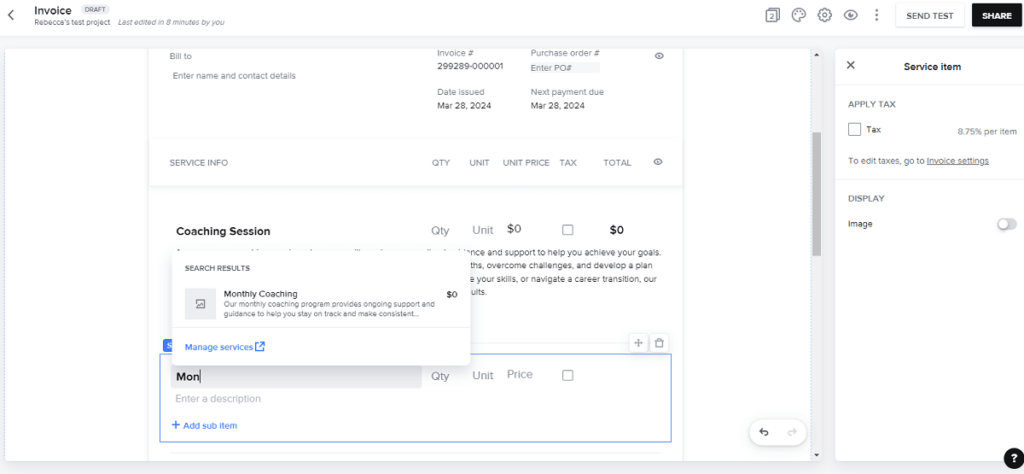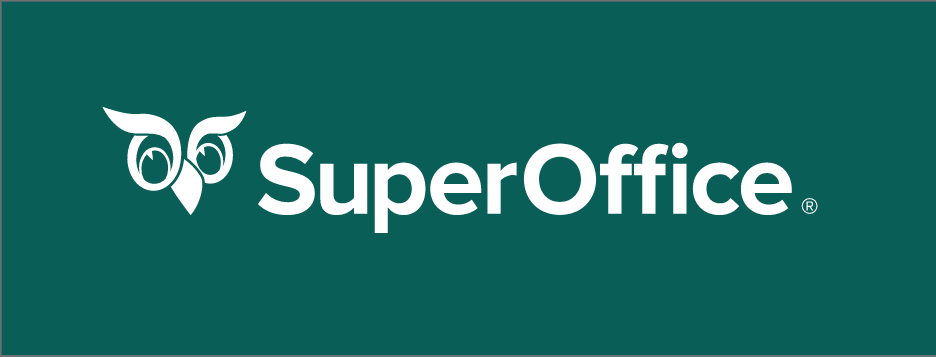
Comprehensive HoneyBook CRM Review 2025 – My Take
My Verdict
- Unlimited clients and projects on all plans
- Excellent customer support and resources
- Easy-to-use Android and iOS apps
- Free trial but no free plan
Pricing
Starter Plan
Essentials Plan
Premium Plan
Integrations
What Can HoneyBook CRM Do for You?
HoneyBook is a cloud-based customer relationship management service. It’s an all-in-one platform that focuses on client management for independent business owners. Its features, such as invoicing and online contract templates, are aimed at service-based businesses.
HoneyBook offers front-end client experience tools and backend functions so you can manage projects seamlessly. You can capture leads, store and access client information, and use
professional templates for contracts, invoices, and proposals. Plus, you can process payments through the bookkeeping capabilities.
This CRM will help you streamline your daily tasks. The flexible approach and easy-to-use dashboard mean you manage your business with your attention focused on the services you offer. All of the plans start with a free HoneyBook trial, which lasts for seven days. It’s a helpful option for testing out the features and integrations.
Key Features of HoneyBook CRM
In my extensive HoneyBook review, I explored the features of this powerful client management platform. The functionality is tailored to owners of a service-based business, with options to manage projects, track inquiries, automate workflows, and accept online payments.
HoneyBook offers a starter plan with a client portal, basic reports, a calendar, and several professional templates. As you move up to the essentials plan, you gain a range of automations, expense management, standard reports, and enhanced integrations.
The premium plan includes the essentials plan features but enhances your access, with the whole team able to view and use your client information. Let’s take a closer look at the specific features and how they work.
Online contracts
Your contracts are the cornerstone of your client relationships, but HoneyBooks has convinced me that they can strengthen them in new ways. The service looked so professional that it couldn’t fail to make a good impression.
I quickly got to grips with the options to alter the style and branding of the contracts. Your HoneyBook account gets you access to legally vetted templates, so the documents fulfill your needs and stand up to scrutiny.
I can see users being as enthusiastic about the interactive guide as I was. It walks clients through each step of the process, which prevents a lot of hitches and going back and forth. As you’d expect from a CRM, there are smart fields that fill in client information, including names, locations, and dates.
HoneyBook focuses on removing obstacles. Clients can use the eSign feature from any device without having to download the contract. You can automate polite reminders and get status updates for the receiving, opening, viewing, and completion stages.
Invoicing
One of the key aspects of client communication that the platform supports is invoicing. It’s a time-saving feature, but it also helps you get paid on time and demonstrates your professionalism to your clients.
I’m impressed with the integrated invoicing and payments, as you can include a payment link while setting up the invoice. The feature includes all of the necessary steps, including adding your branding and the ability to set flexible payment terms, such as installments and payment milestones.

I appreciate the scheduling and automation options. You can schedule the invoice to be sent on a particular day and at a set time. There’s also an option to send a reminder if they haven’t viewed the invoice after a number of days. You can pick the email templates to match the tone of your brand.

HoneyBook’s fees are reasonable. I compared them to competitors and other payment platforms, and they came out lower than most options. The rates start at 1.5% for ACH payments and 2.9% plus a flat fee of 25¢ for card payments.
Online scheduling
When you manage projects with lots of meetings, you’ll find HoneyBook’s online scheduling feature a game-changer. I found the tool intuitive, as the layout is logical. You move from the calendar dates to the time schedule, with the ability to block out days or weeks.
For meetings, you can set a name, such as consultation or tasting, making it customizable for different business types. I also like that the session details cover in-person, video, or phone call meetings. The ability to create windows of availability and set time buffers takes this feature from a scheduler to a time-management tool.

Since you can save details about an appointment, you can get up to speed before attending in just a few taps. The app and the Google Calendar integration are two crucial aspects that make this feature work so well. You can set things up on the go and sync with the calendar on your phone.
As with the invoicing feature, I was pleased to see reminders and notifications for clients, too. That includes a suggested option to reschedule if the time no longer works and real-time syncing. I particularly appreciated being able to customize communications with my logo and brand colors.
Automation
HoneyBook’s automation tools are set up to help you keep clients and not miss out on leads. The notifications, flexibility to delay actions, and approval options mean you can provide a 24/7 service without actually having to clock in.
My favorite function is the option to send follow-ups. When a client makes an inquiry, you can respond automatically. However, this service goes beyond an automated reply. Depending on the circumstances, you can trigger marketing materials, scheduling links, and questionnaires.

It’s not just for pursuing leads, as you can request a review, send a survey or say thank you to clients when a job is done. I found it easy to plot the routes using dates and behavior, such as signing a contract, to trigger actions.
The templates and automation work particularly well together. As usual, branding on materials is customizable, and nothing seems generic. I like how much time you can save by setting up automations and reusing them. Plus, the overview of any upcoming automation tasks meant I still felt in control.
Online payments
Another core element of this client management platform is the ability to accept payments. I was impressed by the ability to cover contracts and invoices and process payments in one step. The mobile-friendly online payments make it easy for you and your clients. You can track upcoming and outstanding payments through the app.
Payment options include bank transfers and debit and credit cards. The service is available 24/7, and I like that you can decide which payments to transfer. Most deposits from HoneyBook to your bank account arrive within a few minutes, which is a real advantage when it comes to managing cash flow.
The options for payment reminders, setting up recurring payments, and allowing clients to pay automatically when receiving an invoice impressed me. The flexibility for service-based businesses makes HoneyBook stand out, especially with the option to add a gratuity.
The fraud and dispute resolutions bring peace of mind. Transactions are monitored, and issues are checked instead of clients automatically receiving a refund.
Online proposals
The professional templates for online proposals are where HoneyBook comes into its own. As with other communications sent from this platform, branding is customizable, with options to add logos and photos and change colors. I appreciated getting to see a document from the client’s perspective before sending it.
The template combines contracts and invoices with payment proposals. It took me a while to get my head around how these elements worked together, but this is where the support materials really came in handy.

You can agree on a service, set the payment schedule, and offer a payment form in one seamless experience. It’s a powerful lead management tool. The steps for doing business with your clients are neatly lined up, with little effort required on either side.
My favorite part of the online proposal functionality was how easy it was to stay on top of a project. I received notifications when a client reviewed a proposal, signed a contract, and started a payment. Crucially, you can make tweaks, update the document, and get the signature without needing to send five different emails.
Pricing – Subscription Plans
No matter which plan you choose, they all start with a seven-day free trial. It’s the ideal way to work out if HoneyBook CRM will meet your business needs. Plus, you’ve got a 60-day money-back guarantee on top of that.
There are three HoneyBook pricing plans, and they all include unlimited clients and projects. The essentials plan adds more features, whereas the premium plan enhances access, support, and use across multiple companies.
The prices are reasonable, and you get a discount for paying yearly instead of monthly, with two months for free. During my review, there was a 50% discount on all subscriptions, making the prospect even more attractive. I delved into the details and prices of each plan.
Starter Plan
The HoneyBook pricing plans begin with an affordable $16 per month subscription. That’s if you pay yearly, and it’s $8 with the promo code SAVE50 when the 50% off deal is running. Alternatively, it’s $19 or $9.50 with the discount for the first three months if you pay monthly.
The starter plan is a viable option if you only need the main functions of the platform. Remember that only one member of your team gets access. If you’re a small team or on your own and on a tight budget, it’s a fantastic way to get the benefits and keep the costs down.
The HoneyBook starter plan includes:
- The client portal
- Calendar
- Unlimited clients and projects
- Basic reports
- Professional templates
- Proposals
- Contracts
- Invoices
- Payments
- Access by one team member
Essentials Plan
The essentials plan provides access for up to two team members, making it a better option for growing or slightly larger businesses. It comes with all the features of the starter plan, but it ups the game in terms of automation and productivity tools.
The yearly subscription is ordinarily $32 per month unless you snap up the discount and get it for $16. When paying monthly, it’s $39 or $19.50 for the first three months, with the 50% reduction.
On top of the starter plan features, the HoneyBook essential plan delivers:
- “Powered by HoneyBook” text removed from communications
- Scheduler for booking free and paid sessions
- Standard reports with more insights
- Profit and loss overview
- Expense management
- Automations
- QuickBooks Online integration
- Access by up to two team members
Premium Plan
The premium plan is the top subscription tier from HoneyBook. A yearly package costs $33 with 50% off or $66 per month otherwise. Stay flexible with a monthly subscription, which will cost $79 or $39.50 with the promotion for the first three months.
The crucial difference between this and the Essentials plan is that unlimited team members get access to the platform. It works well for larger businesses and independent business owners with multiple companies. Advanced reports hadn’t launched yet when I tested HoneyBook, but they’re on the horizon for premium subscribers.
Choosing the HoneyBook premium plan delivers:
- Priority support via chat and email with a dedicated account manager
- A single login for access by multiple companies
- An onboarding specialist
- Access by unlimited team members
Is HoneyBook CRM User-Friendly
A client management tool is supposed to save you time, so it’s not much help if it takes a long time to get to know the software and its functions. I found most aspects of the HoneyBook platform intuitive.
In some cases, I encountered a few challenges and wasn’t sure how to proceed. Fortunately, solutions were close at hand. I’ve explored the user-friendly setup and support below.
Complimentary account setup
HoneyBook offers a free file setup service. If you have existing documents, then you can import them to HoneyBook so that you can use them within the platform’s workflow. Document types available for upload include contracts, forms, invoices, pricing lists, and questionnaires. You can even add open invoices.
The one-time complimentary account setup happens in the first few days of your subscription. I recommend taking advantage of it, as it means your files are where you need them and in the right format. All of that means you can hit the ground running and experience the CRM benefits sooner rather than later.
Help Center
HoneyBook’s help center is well-organized and covers a wealth of topics. I expect nothing less from a top CRM. However, I particularly liked the video tutorials on boosting efficiency, consolidating tools, and streamlining workflows.
There are also articles to read on getting started, managing your account, your workflow, and payments and finances. I found the smart files articles the most useful, as HoneyBook has a particular way of doing things.
Every angle is covered, with detailed explanations of the iOS and Android apps, the features, and how to complete individual actions. I recommend seeking out articles about the different integrations, too.
Live webinars
Learning styles differ, which is why I appreciated the live webinars that HoneyBook runs from time to time. The sessions run throughout the week, and the webinars are repeated, making them easy to fit into your schedule.
Team members who are new to CRM will benefit from the sessions that cover the basics. As someone who has seen many CRM setups, I still found there was plenty to learn about this particular interface.
The advanced tools webinars were clear and insightful. Plus, I like that HoneyBook offers something extra with the business management webinars.
Customer service
With the account setup, webinars, and comprehensive help center, there’s a good chance you can sort everything out on your own. However, it’s good to know that there’s support if you need it. For some of the more perplexing aspects of the interface, paying members can contact the team for help via email or live chat.
The support staff are friendly and knowledgable, which certainly adds to the experience of using HoneyBook. The team works seven days a week from 6 am to 6 pm PT, Monday to Friday, and 8 am to 5 pm PT on Saturdays and Sundays. If you pick the premium plan, you’ll have a dedicated account manager.
Which Integrations Are Available with HoneyBook CRM?
HoneyBook offers several integrations to enhance the platform’s client management capabilities.
- Gmail
- Outlook
- Yahoo Mail
- Calendly
- Zapier
- Zoom
- QuickBooks
- Asana
- Slack
Is HoneyBook a Suitable Choice for Small Businesses?
I spotted a few signs that HoneyBook is a suitable client management platform for small businesses. It’s particularly aimed at independent business owners.
A HoneyBook account amplifies the capabilities of one person, so small businesses will benefit just as much, if not more, from the time-saving aspects. Being able to set up a proposal, contract, invoice, and payment form in one is a fantastic way to streamline.
The HoneyBook pricing plans are straightforward. The starter plan is affordable. Plus, that gets you access to the professional templates, where you can add your branding. Your documents will look like you have a whole team of people running the show, even when you don’t.
An upgrade to the essentials plan brings workflow automations that can transform how you run the backend of your business. The financial side is taken care of, and you can free up your time to deliver services while customers use the scheduler to book.

The premium plan is mostly aimed at larger businesses or those with multiple companies. I’d only recommend considering it if having priority support and unlimited team members are non-negotiable.
Comparison: Free vs Paid Version
There isn’t a free version of the platform; it’s just a free trial that lasts for seven days. You won’t be able to access the free file setup and upload your documents at that stage. Otherwise, most of the features are there for you to try.
During the free trial, you won’t get the premium plan features, such as priority support with a dedicated account manager and unlimited team members, as those are only available to subscribers. It’s a useful way to get to know the software, but you’ll really see what it can do once you subscribe.
Which Companies Work with HoneyBook CRM?
HoneyBook isn’t about high-profile clients; it’s about independent business owners. It works with over 100,000 businesses. There’s a strong emphasis on creatives, including the following business types:
- Digital marketers
- Creative studios
- Artists
- Photographers
- Arts and crafts
- Non-profit organizations
Is HoneyBook CRM the Right Choice for You?
Your experience during the free trial, the HoneyBook pricing plans, and the features should help you work out if it’s right for you. Here’s my advice after getting to know the platform well.
Choose HoneyBook if:
- You’re an independent business owner with a modest budget
- You run a service-based business
- You want to streamline bookings, invoicing, contracts, and payments
- You’ll benefit from managing business tasks on your phone
- You’re flying solo or are a small team but still want professional, branded documents
Avoid HoneyBook if:
- You’re looking for a CRM platform with a free version
- A product-based business needing eCommerce integrations
- You’re an incredibly high-end brand that needs luxury options when it comes to style, fonts, and colors.
Honeybook CRM Resources: Our Essential Guides and Tutorials
Discover how to cancel your HoneyBook account in 3 different ways
Discover how to cancel your HoneyBook account in 3 different ways.
Discover how to cancel your HoneyBook account in 3 different ways
How Much Does HoneyBook Charge per Transaction
Learn how much HoneyBook charges per transaction and optimize your financial strategy for business transactions.
How Much Does HoneyBook Charge per Transaction






















